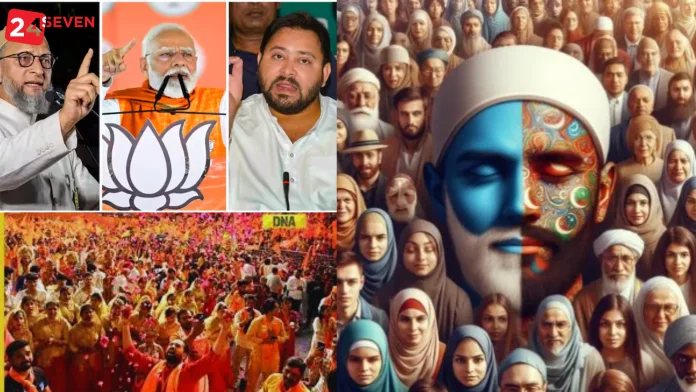EAC-PM Study Unveils Shocking Demographic Shifts: Hindu Population Decline, Muslim Rise in India
In a groundbreaking study released by the Economic Advisory Council to the Prime Minister (EAC-PM), India’s demographic landscape between 1950 and 2015 has been thrust into the spotlight, revealing seismic shifts in religious composition. The study, titled “Share of religious minorities: A cross-country analysis,” underscores the profound changes witnessed within India’s societal fabric over the past six and a half decades.
Highlighting the magnitude of these demographic transformations, the study discloses a remarkable 7.81% decrease in the Hindu population’s share, marking a significant departure from historical trends. Conversely, the Muslim community experienced an unprecedented surge, with their population skyrocketing by an astonishing 43.15%, altering the religious demographic makeup of the nation.
Groundbreaking Analysis: India’s Religious Landscape Transformed Over 65 Years, EAC-PM Report Reveals
The EAC-PM’s analysis extends beyond Hindu-Muslim dynamics, shedding light on the growth trajectories of other religious communities as well. While Christians witnessed a notable increase of 5.4%, Sikhs and Buddhists also registered significant growth, attaining proportions of 1.85% and 0.81% respectively by 2015. However, the study also notes a decline in the representation of Jains and Parsis during the same period.
Delving deeper into the study’s implications, researchers stress the importance of understanding neighboring countries’ demographic dynamics due to their geographical proximity to India. The findings challenge prevalent narratives, suggesting that minority communities within India are not only protected but are flourishing, a stark contrast to trends observed in neighboring nations such as Bangladesh, Pakistan, and Sri Lanka.
Globally, the study unveils a trend towards greater religious diversity, with a significant decrease of approximately 22% in the share of the majority religious denomination observed across major continents. This trend underscores the evolving religious dynamics on a global scale, with more countries experiencing a decline in the proportion of the majority religious group than those witnessing an increase.
Furthermore, the study elucidates the significant role played by the majority religious denomination in countries undergoing profound transformations. It underscores the diversity of religious dynamics across different regions and traditions, emphasizing the need for nuanced understanding and inclusive policies.
The EAC-PM’s study refrains from delving into the causal factors behind these demographic shifts, focusing instead on analyzing numerical representations. However, it asserts that India’s performance suggests a conducive environment for fostering diversity, thereby attracting minority populations from neighboring countries during times of adversity.




